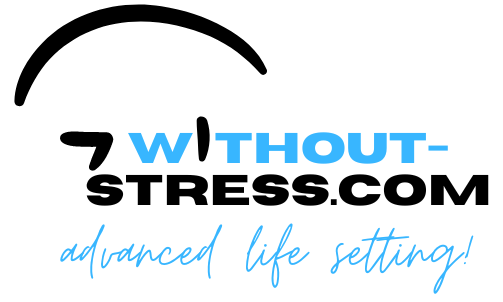Stress is a natural reaction that arises, for example, from fears, new challenges, or pressure situations. Typical signs of stress include a faster heartbeat, muscle tension, or, for example, pain in the lower back (stress zone). With these reactions, the body tries to warn us by sending signals that something is wrong. Not all kind of stress is the same. Positive stress, also called eustress, differs from distress, which refers to negative stress. Eustress can be seen as beneficial, as it is often energizing and motivating, thereby increasing productivity. Distress, on the other hand, fuels negative thoughts, lowers mood, and triggers doubt and dissatisfaction. Prolonged distress leads to chronic health problems over time. In this article, we explore stress by describing examples and providing tips.
Why is eustress a positive form of stress?
Eustress motivates us, helping to achieve goals. This positive form of stress is often considered healthy, as it encourages us to perform and overcome challenges. Positive stress fosters creativity, aids in thinking and reflecting, and helps us stay focused and engaged. Eustress often arises from goals and deadlines, remains short-term, and is energizing. Eustress is useful for increasing productivity and reaching set goals. Positive stress feels good, especially when happiness arises after achieving a goal or completing a task or project.
In contrast to negative stress, which paralyzes, eustress ensures that we focus and take action. Positive stress also strengthens our self-confidence and well-being.
What are examples of positive stress (eustress)?
- Participating in a competition puts the body under tension, but simultaneously increases concentration and motivation.
- A project deadline or a time limit can be inspiring despite time pressure.
- Nervousness before a stage performance or a job interview can serve as motivation to present oneself in the best possible way.
- Excitement and curiosity when tackling a new challenge drive us to do our best.
- Written goals (SMART goals) and proactively pursuing them, e.g., achieving a certain running distance for a marathon.
Why is negative stress (distress) unhealthy in the long run?
Negative stress is often physically, mentally, and emotionally exhausting. When stress factors through distress persist, the body can enter a state of chronic stress, which usually leads to health and chronic problems. Negative stress reduces the quality of life and causes, for example, anxiety or other physical and mental disorders. Those affected by distress often suffer long-term and feel permanently exhausted. Performance is limited, and the body signals that something is wrong through pain in different areas. Those who do not question recurring and persistent pain but accept it as age-related or normal often suffer from feelings of despondency, frustration, and overwhelm. Distress reduces our ability to take action and leads to a downward spiral of frustration and helplessness.
What signs and risks indicate distress?
- Constant overload at work with no prospect of relief.
- Financial problems, especially over a longer period, create chronic stress.
- Unresolved conflicts and differences in a relationship lead to emotional stress.
- Encountering death and the associated grief often leads to extraordinarily high emotional stress.
- Job insecurity or unemployment often lead to long-term distress.
Your perception determines eustress or distress
If we view a situation as a challenge that we can master, it is positive stress, or eustress. If the situation seems unsolvable and leads to overwhelm, it is negative stress. This distress typically has negative effects on health, such as headaches, lack of sleep, heart problems, anxiety, and depression.
Eustress, on the other hand, has positive effects because positive stress produces endorphins and thus improves mental condition. Both positive and negative stress release hormones like adrenaline and cortisol. After eustress, the body and mind recover. In the case of distress, the body and negative mental state remain in a constant state that negatively affects health and can lead to chronic problems and pain.
Tips for avoiding and managing negative stress
Stress is somehow part of life, especially when it comes unexpectedly. What determines the effect of stress on the psyche and body is how we deal with the situation and our thoughts about it. There are many strategies available for dealing with negative stress; the question is, which of the various solutions fits best for you. Ideally, individuals who are potentially affected by stress (e.g., due to their profession) act proactively and preventatively to maintain the balance between eustress and distress or to avoid negative stress altogether.
Here we provide an overview of the most well-known methods for preventive and acute stress management:
- Regular exercise releases endorphins and reduces stress hormones preventively.
- Social contacts help to relativize and solve emerging problems through conversations.
- Time pressure is often a major stress factor that can largely be avoided through time management and prioritization.
- Mental techniques, such as breathing exercises, meditation, or yoga, help both preventively and in cases of acute stress.
- For chronic stress, therapy or coaching may be necessary, especially if self-therapy has not been effective for some time.
Stay up to date
With an anti-spam guarantee and the free information service, we provide you with compact updates on further articles, ideas, experiences, and projects from everyday life. Simply select your interests and topics here: https://www.tomfrick.de/infoservice


